Yu choy with garlic sauce
Yu Choy with Garlic Sauce is quick, simple, and full of flavor—ready in just 20 minutes! It’s a fabulous way to enjoy a healthy, vibrant meal with extra fiber and flavor.
And if you love flavorful, healthy food made simple, don’t miss my Bok Choy Dim Sum. It’s another terrific Asian side dish that’s super popular among our readers.
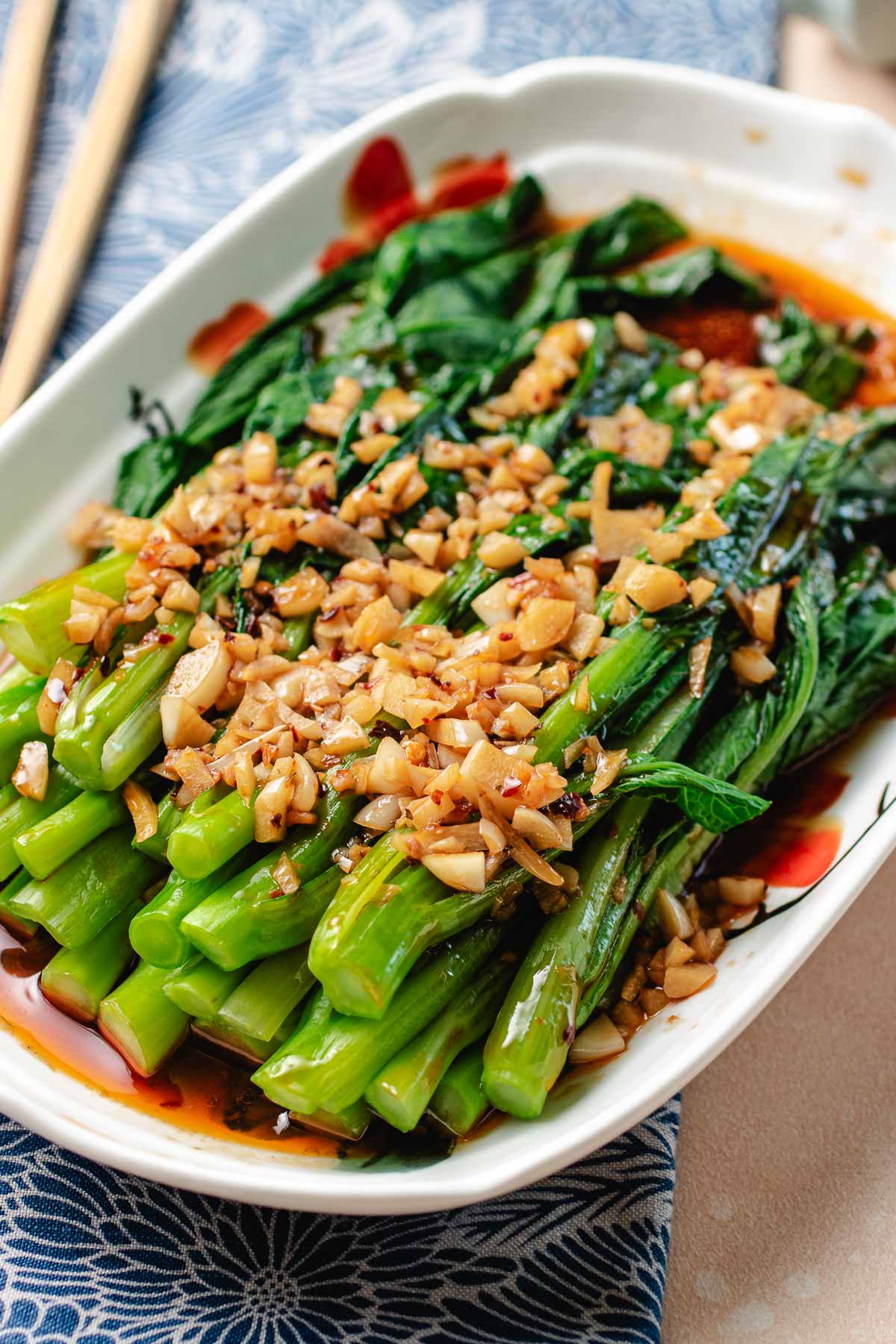
What is yu choy
Yu Choy, also known as choy sum, is a type of leafy green vegetable from the Cruciferous family, commonly found in Chinese cuisine. “Yu Choy” is the Cantonese way to say “You Cai,” which is Mandarin (油菜), and it means “oil vegetable.”
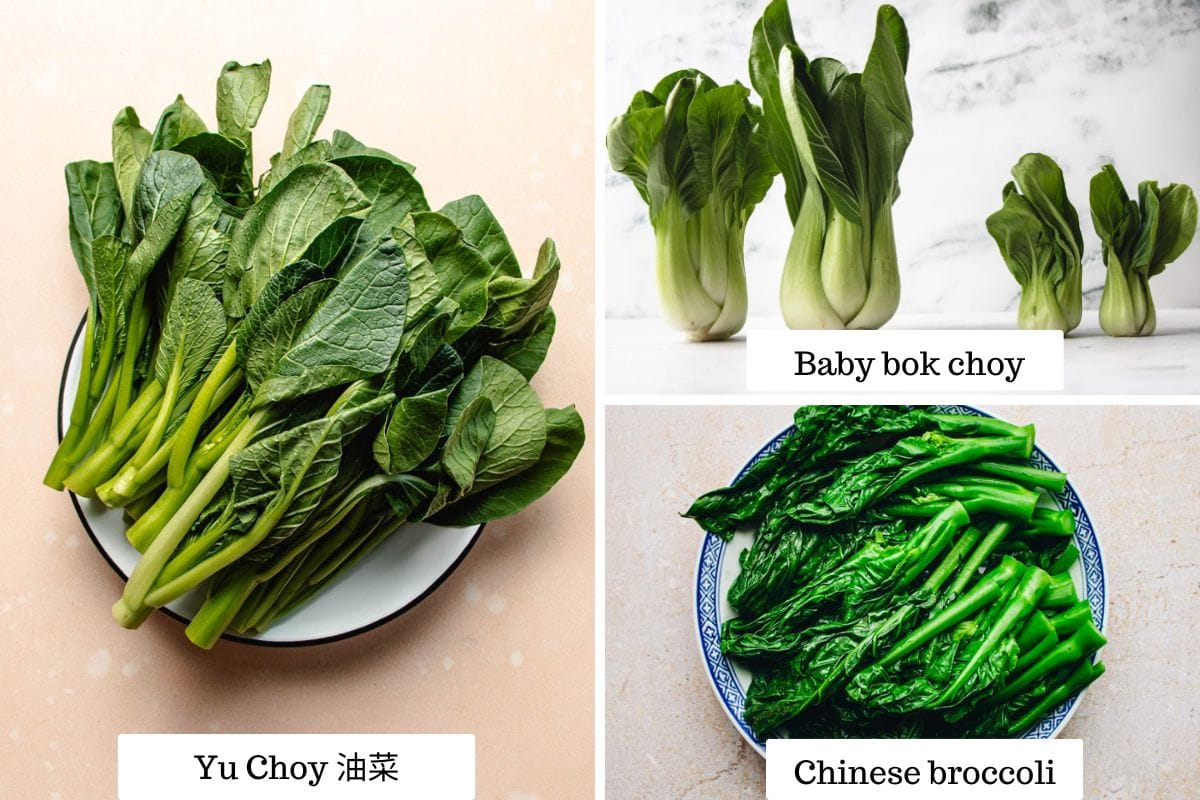
Appearance
Yu Choy sum looks a bit like Chinese broccoli (Gai Lan) but has softer, oval-shaped leaves and a tender stalk that is less thick. Sometimes, it also has small yellow flowers.
Taste
It tastes sweeter and milder than bok choy and is less bitter than Chinese broccoli, with a slight sweetness and a fresh, grassy flavor.
How to Cook It
You can cook Yu Choy by blanching, stir-frying, or steaming it. Common seasonings include salt, garlic, and oyster sauce (or vegetarian oyster sauce made from mushrooms).
How to select and where to buy
Yu Choy is available in two types:
- Regular Yu Choy: About 11-12 inches (28-30 cm) long with slightly thicker stems.
- Baby Yu Choy (Also called Choy Sum or Choi Sum in Cantonese; 菜心 Cai Xin in Mandarin): Shorter, about 9 inches (23 cm) long.
Where to Find It
You can find Yu Choy in Chinatown, Korean, and Japanese grocery stores, but it’s also becoming more popular in local farmers markets and stores like Whole Foods.
Choosing the Best
When picking Yu Choy, look for bundles that are vibrant and firm, not limp. The stems should be moist-looking without being dry or brittle. Try to avoid any bundles with lots of yellow or white flowers; they are older and more fibrous.
Ingredients
Let’s look at the simple ingredients we need to make this super delicious Yu Choy with Garlic Sauce. These are everyday items you can find in any Chinese kitchen, and they help make the dish taste just like the ones you enjoy at dim sum!
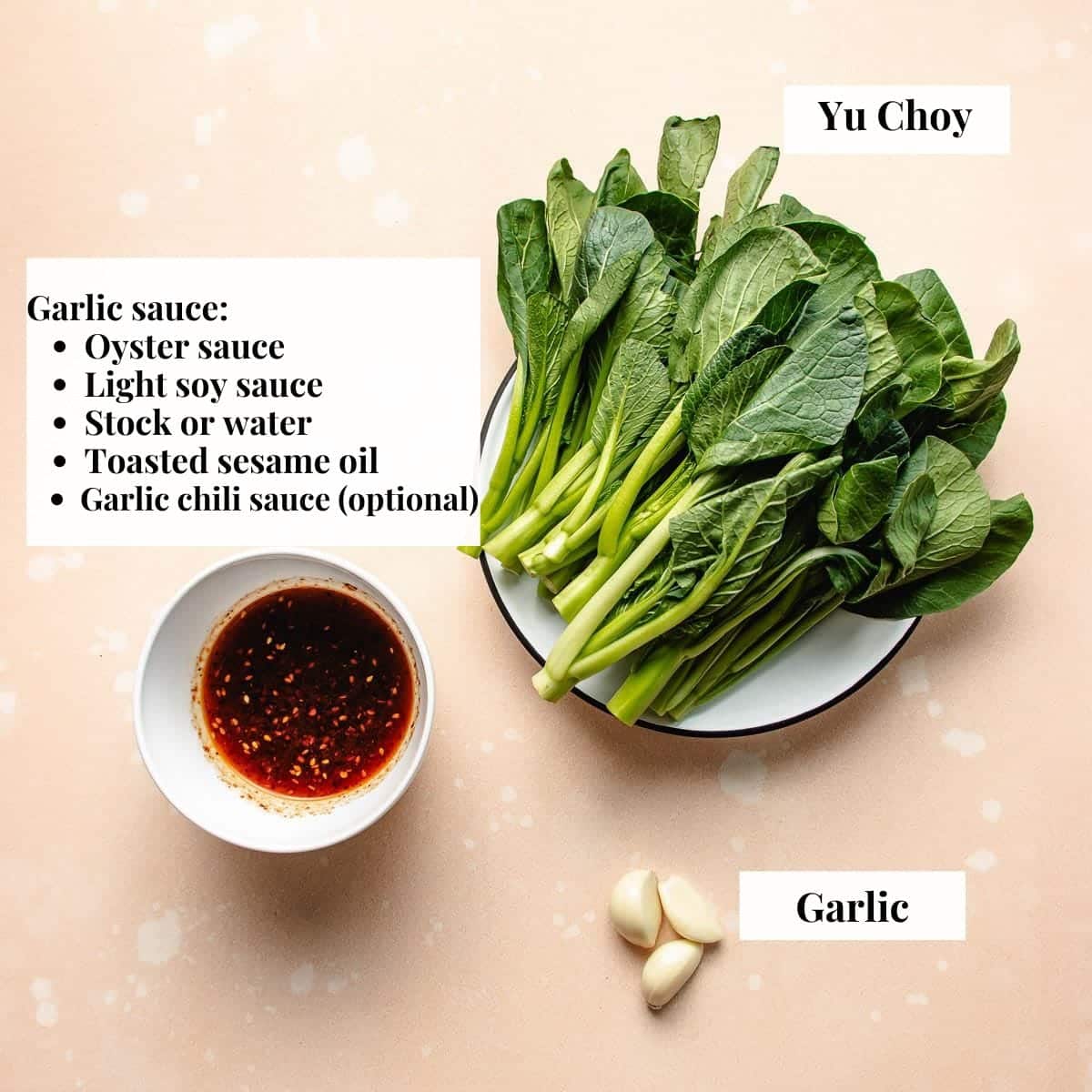
- Yu Choy: A crisp and sweet green vegetable known for its tender stalk and oval-shaped leaves. It’s less bitter than Chinese broccoli and has a subtle sweet flavor.
- Garlic Cloves: Used for their pungent flavor that becomes sweet and complex upon cooking, enhancing the overall savoriness of the dish.
- Oyster Sauce: Adds a deep umami flavor that provides a salty and slightly sweet base to the sauce. A vegetarian oyster sauce made from mushrooms can also be used as a tasty alternative.
- Light Soy Sauce: Infuses the dish with a salty and umami flavor that enhances the other ingredients without overpowering them.
- Chicken Stock, Vegetable Stock, or Water: Used as a base for the sauce, adding either a subtle depth of flavor (with stocks) or keeping it light (with water).
- Toasted Sesame Oil: Gives a hint of nutty flavor and aroma, enriching the complexity of the sauce.
- Garlic Chili Sauce: Optional for those who enjoy a spicy kick, adding a zesty dimension to the dish.
- Avocado Oil: A mild, healthy oil that carries the flavors of the sauce well and prevents sticking while cooking garlic.
Yu choy substitutions
Can’t find Yu-Choy? No worries! Here are some great alternatives you can use instead, listed from the best substitutes to other options:
- Tatsoi: Available in salad green and full size, Tatsoi has wrinkly leaves and crisp-tender stems, similar in texture to You Choy and not as peppery as bok choy.
- Shanghai Bok Choy or Dwarf Bok Choy – These are baby versions of bok choy with tender, less fibrous stems. Check out our bok choy salad to learn how to blanch bok choy.
- Little Bok Choy (小白菜) – A favorite in Taiwanese cooking, perfect for stir-frying, blanching, or adding to soups.
- Chinese Broccoli – This veggie has thicker and denser stalks and firmer leaves compared to Yu Choy. For tips on how to prepare it, see my Chinese broccoli with oyster sauce.
- AA Choy Sum – A crispy and tender type of lettuce very popular in Taiwan, excellent for blanching and similar to celery in its family.
How to make the dish
Ready to cook something incredibly easy and delicious? Follow these straightforward steps to prepare Yu Choy that’s tender and cooked just right, complemented by a tasty garlic sauce.
Preparing yu choy
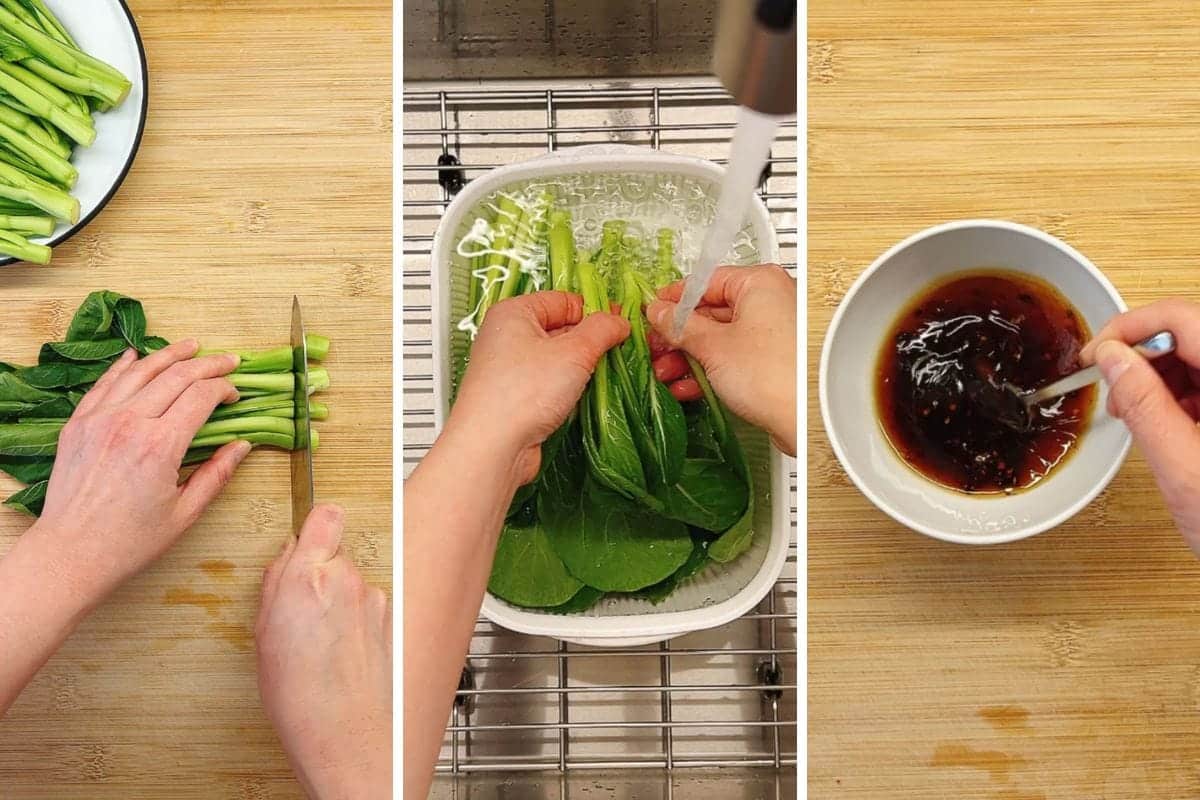
- Start by trimming the dry ends off the Yu Choy, about a quarter inch from the bottom.
- Wash the Yu Choy thoroughly in cold water. Make sure to separate the layers to remove any hidden dirt. Once cleaned, let the Yu Choy drain off any excess water.
Blanching yu choy
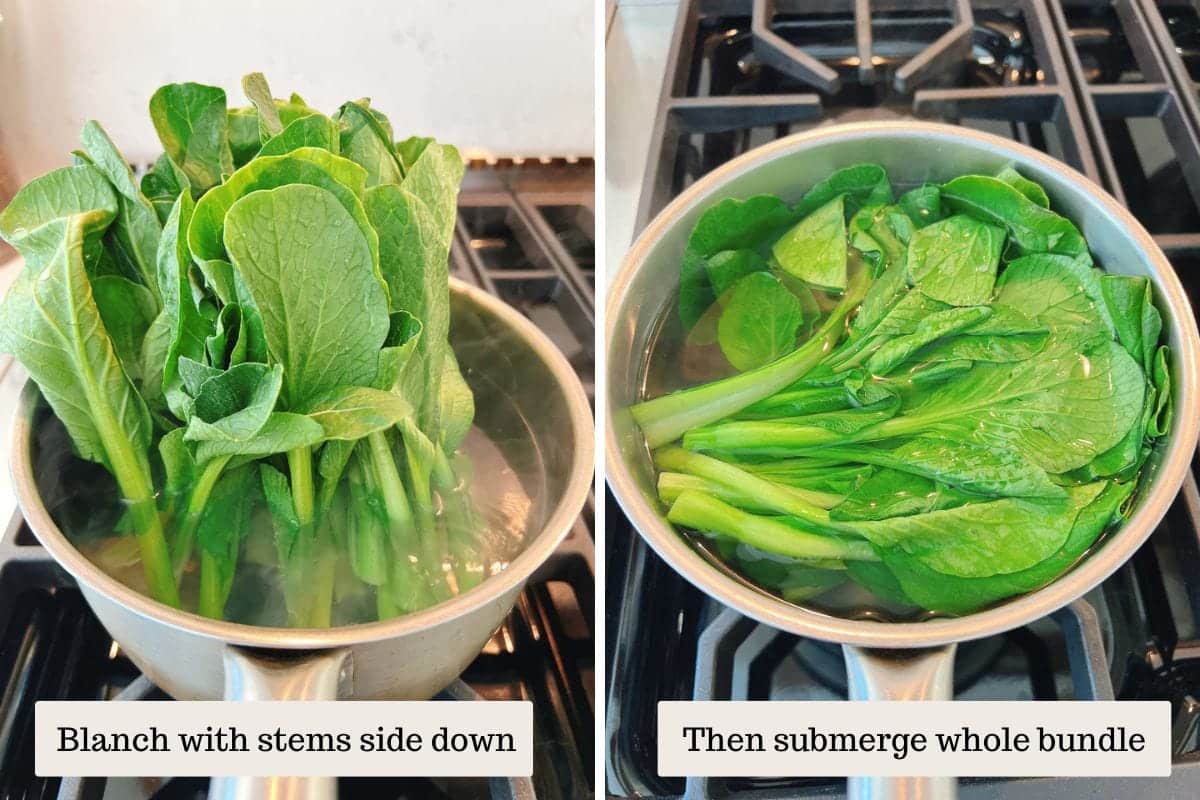
- Bring a large pot of water to a boil. Meanwhile, mix your minced garlic with the sauce ingredients (oyster sauce to garlic chili sauce, if using) in a small bowl.
- Reduce the heat to medium-high. Similar to making bok choy soup, bundle the Yu Choy, stems down, and blanch standing up for 45 seconds. If the stems are thick, blanch for just over a minute.
- Then, submerge the entire bundle for another 30 seconds to ensure even cooking.
- Remove and immediately cool in cold water to stop the cooking process. Squeeze out excess water gently.
Making the sauce
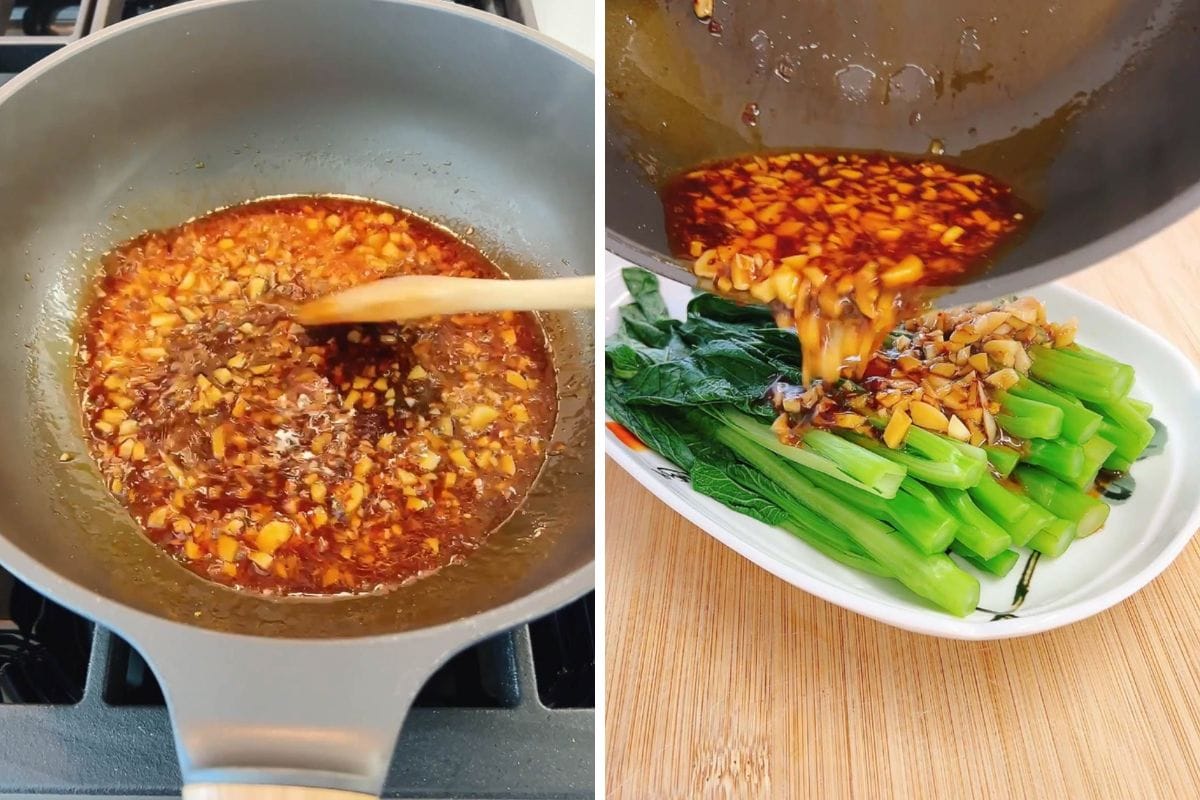
- Heat avocado oil in a pan over medium heat, then sauté the garlic for about 10 seconds. Stir in the previously mixed sauce and warm it up for about 30 seconds without bringing it to a boil.
- Pour the warm sauce over the blanched Yu Choy and serve immediately. Enjoy your dish warm or at room temperature!
Make ahead, store, and reheat
This dish is best enjoyed fresh, but you can blanch the Yu Choy and make the sauce ahead of time. Pack the sauce and the blanched vegetables separately in an airtight container. Just reheat the sauce and pour over the Yu Choy when ready to serve.
What to serve it with
This blanched Yu Choy in Garlic Sauce recipe is wonderfully easy to pair with a wide variety of dishes. Whether you’re craving rice, dim sum, or a hearty main course, here are some perfect combinations to enhance your meal:
Rice:
- For a delightful twist, try it alongside Din tai fung fried rice with shrimp for a fulfilling meal, or choose Shirataki fried rice if you prefer a low-carb option.
At-home Dim Sum:
- Make it a feast with a variety of dim sum delights! Enjoy your Yu Choy with Seafood dim sum, Daikon potstickers, Rice paper dumplings, and Shrimp wontons for a complete dim sum experience at home.
Main Dishes:
- Complement your Yu Choy with some hearty main dishes. Sha cha beef offers a robust flavor, while Chinese sweet and sour chicken provides a tangy contrast that’s sure to please.
Helpful tips
- Selecting Yu Choy: Choose Yu Choy that looks vibrant and fresh without any wilted leaves or dry, brittle stems. Avoid bundles with many yellow or white flowers, as they tend to be older and more fibrous.
- Trimming Yu Choy: Make sure to trim just a small amount from the bottom ends of the Yu Choy to remove dry tips
- Washing Technique: Thoroughly wash Yu Choy in cold water by separating each layer. This step is crucial to remove hidden dirt.
- Blanching Process: Place the Yu Choy stems downward in a standing position in boiling water. Blanch the stems first for up to a minute, then submerge the whole bundle for another 30 seconds to cook the leaves evenly.
- Serving Temperature: Yu Choy with Garlic Sauce can be served warm or at room temperature, depending on your preference. Adjust the serving temperature to complement other dishes on the table.
FAQs
You can eat all parts of Yu Choy – the tender leaves, crisp stems, and even the small yellow flowers, if present. Each offers a slightly different texture and flavor.
Bok choy and Yu Choy differ mainly in taste and texture. Bok choy is slightly peppery, while Yu Choy is sweeter and has tender leaves and softer stems.
Any brand of garlic chili sauce that you prefer is fine, though some brands may be spicier than others. My personal store-bought favorites are Momofuku and Fly by Jing. Start with a small amount and adjust according to your taste.
More stir fried Chinese vegetables you might like
Looking for more tasty and easy-to-make dishes? Here are some delightful options that complement the flavors of our Yu Choy recipe. Dive in and discover more favorites:
- Bok Choy Stir Fry: A simple yet flavorful three-ingredient dish that’s perfect for a quick, healthy meal.
- Stir Fry Bean Sprouts: A popular Korean side dish that adds a crunchy texture and zesty flavor to any meal.
- Snow Pea Leaves Stir Fry: Tossed with garlic, this dish is not only delicious but also packed with nutrients.
- Chinese Broccoli Stir Fry with Garlic Sauce: A beloved classic among our readers, combining the rich flavors of garlic and fresh greens.

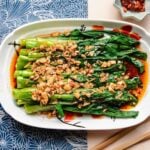
Yu choy with garlic sauce recipe
Video
Ingredients
- 0.6 lb Yu choy
- 0.7 oz garlic cloves, finely minced, 4 large
For the garlic sauce:
- 1 tbsp oyster sauce, or Vegetarian oyster sauce
- 0.5 tbsp light soy sauce, or coconut aminos
- ¼ cup chicken stock, vegetable stock, or water
- 1 tsp toasted sesame oil
- 1 tsp Garlic chili sauce, optional
- 0.5 tbsp avocado oil
Instructions
- Fill a medium sauce pot with water and bring it to boil.
- To prepare the yu choy, trim a small amount of bottom end away to remove the dry tip ends, about a little less than a quarter inch.
- Plunge them into a bowl of cold water a few times to rinse. Also gently separate each layer to rinse away hidden dirt. Set aside to drain.
- Finely mince the garlic and combine the sauce ingredients from oyster sauce to garlic chili sauce, if using, in a small bowl. Stir well.
- Once the water has come to a boil, lower heat to medium-high. Gather the yu choy into a large bundle with the stems facing downward.
- Place the bundle into the water, stem side down in standing position with the leafy parts above the water, and blanch for 45 seconds. If the stems are thicker (more than 0.5-inch), blanch for a little over 1 minute.
- After that, submerge the entire bundle with the leafy parts to blanch for 30 more seconds.
- Remove the yu choy and rinse or shock them in cold water to stop cooking. Gently squeeze out the water and transfer to a large serving plate.
- In a medium pan, preheat over medium heat until it feels warm. Add the oil, swirl it around, then add the garlic. Quickly saute over medium heat for 10 seconds. Take care not to burn.
- Pour in the sauce, gently stir the pan with a wooden spoon for 30 seconds to infuse the sauce with garlic flavor. We don’t want to cook the sauce down. Just to warm it up. Turn off the heat.
- Pour the sauce over the yu choy. Serve immediately, warm, or at room temperature.
Notes
- If using regular yu choy, about 11-12 inch (28-30 cm) long, you can make a cut to separate the stems from the leaves then dice the stems to roughly 2-inch sections. Blanch the stems first then the leaves.
- If the vegetables are too long, for easy serving, you can use a pair of kitchen shears to cut them into sections.
Nutrition
Made a dish and love it? Please remember to rate the recipe and leave a comment in the comment section below! It helps my blog grow organically so I can continue sharing free and awesome content with you. Thank you!


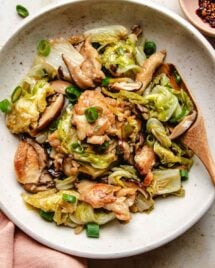

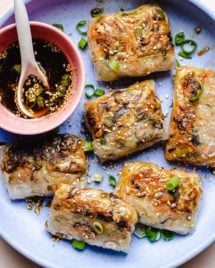
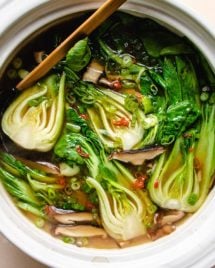




Your recipes have quickly become my go-to for healthy Asian cooking! This recipe knocked out socks off; today we are trying it with BBQ grilled eggplant and Bok Choi!
Thank you so much, Patti. I appreciate it very much!
Should it be 0.6 lb of yu choy (not ounce)? Thanks!
Oh yes you are right. It should be 0.6 pounds. I’ve updated the info now.